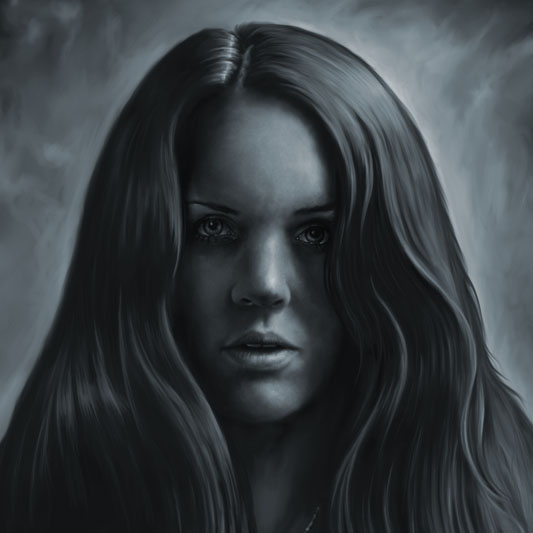My creative leanings found their initial outpourings adorning the petrol tanks of motorbikes. The airbrush was the tool of choice. Celtic knotwork became the preferred art style; occasionally augmented by gold leaf. One of the bikes I painted was entered into a major custom bike show and drew the attention of a writer for a custom bike magazine. He then wrote an article about the bike accompanied by photographs I had taken. This in turn led on to paid commissions to produce art for another custom bike magazine. This was the first time I had paid work appearing in print.
Paper and Art Board
Although I stuck with the airbrush for a while longer, I swapped petrol tanks and metal surfaces for paper and art boards. I also continued with Celtic knotwork as a preferred art style. It was the early 1990’s and, after several years working as an architectural technician, I wanted to branch out as an illustrator. Both required drawing skills and the two disciplines co-existed for a while. The precision required for the architectural work helped get to grips with the geometric aspect of the Celtic work. But I did want something which was less dominated by straight lines as buildings are. Celtic knotwork certainly fitted that bill.
The real beginning as an illustrator was a set of Celtic cards published by a company called Tantra Designs led. On the strength of that and with the aid of numerous phone calls telling them I was the person they needed, I received a book commission from Element Books to produce a set of chapter headings and additional art for a book called The Encyclopaedia of Celtic Wisdom.
Decade of Celtic Art
There then followed a decade of specialising in Celtic art alongside numerous book illustrating commissions. Mostly in traditional pen and ink style. This culminated in a book called The Crafter’s Design Library Celtic for the publishers David & Charles for which I produced some 350 pieces of art. This was followed by another book for David and Charles with led to a transition from a Celtic base to fantasy art.
Really what I do is portraiture. Even if it is a dragon. largely though it is working from life. Working with people I have met over the years mostly at shows and events when I have a stall with my art. The subjects of numerous of my paintings have become friends over the years. Stock photography also helped when I was finding my feet. Allowing a good reference point from which then to take a painted journey.
Traditional
I work in a pretty traditional way. Once a working drawing is produced, I will block in basic colours and refine detail. A painting will often take between one and two weeks. Once I get to a certain stage I often leave the image for a while and come back to it fresh for the final detailing. The Celtic Tarot did not allow me such luxuries and I needed to up my pace quite considerably. I am often asked whether I use oil or acrylic but the reality os these days as many commercial artists I paint digitally. Anything going to print will be digitised anyway, so I cut out the middle man.
When book illustrating I mostly use a steel dip pen and a bottle of ink. And of course there is the simple use of pencils of which some examples are in the galleries section. It is nice to be able to work in different media and styles rather than be restricted to one way of working.
As well as this personal site, I have a Facebook Art Page and an Instagram Page

